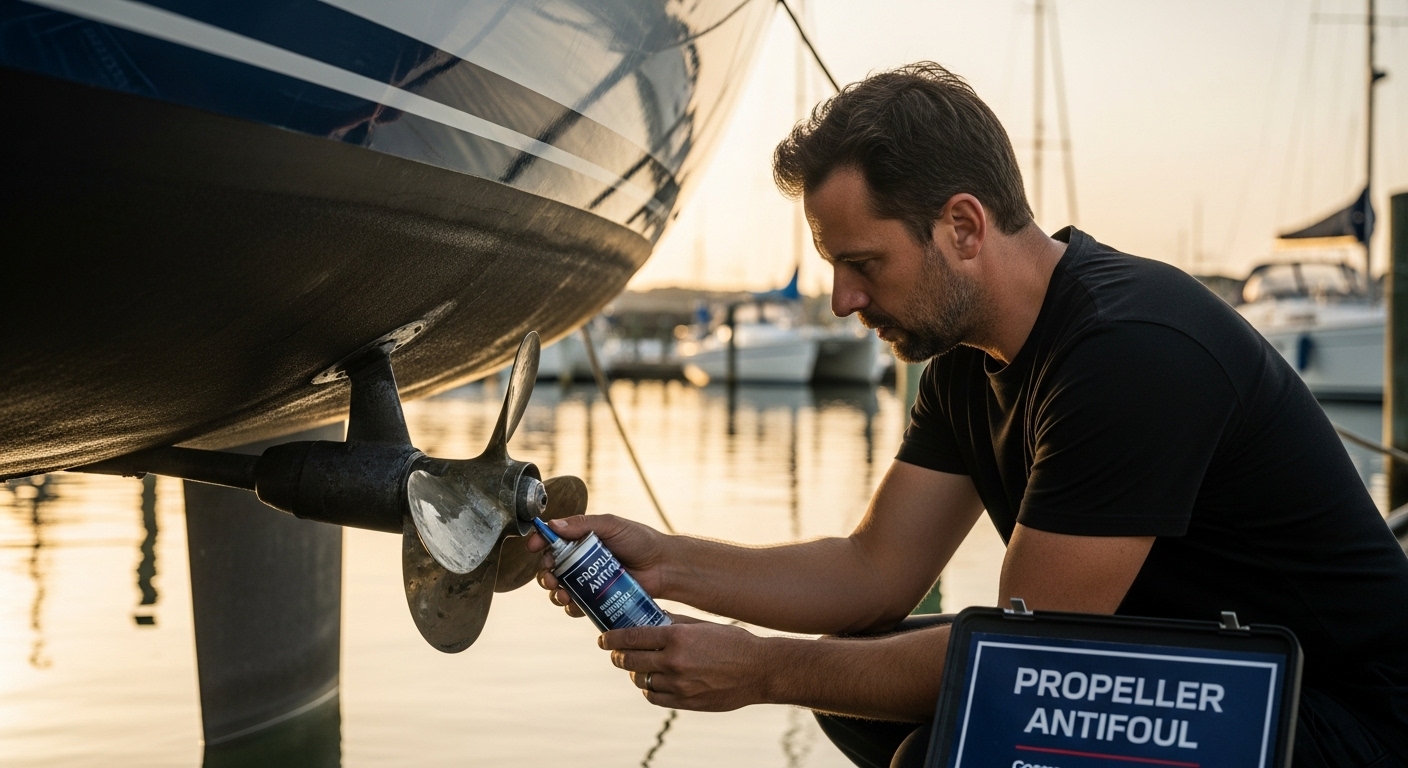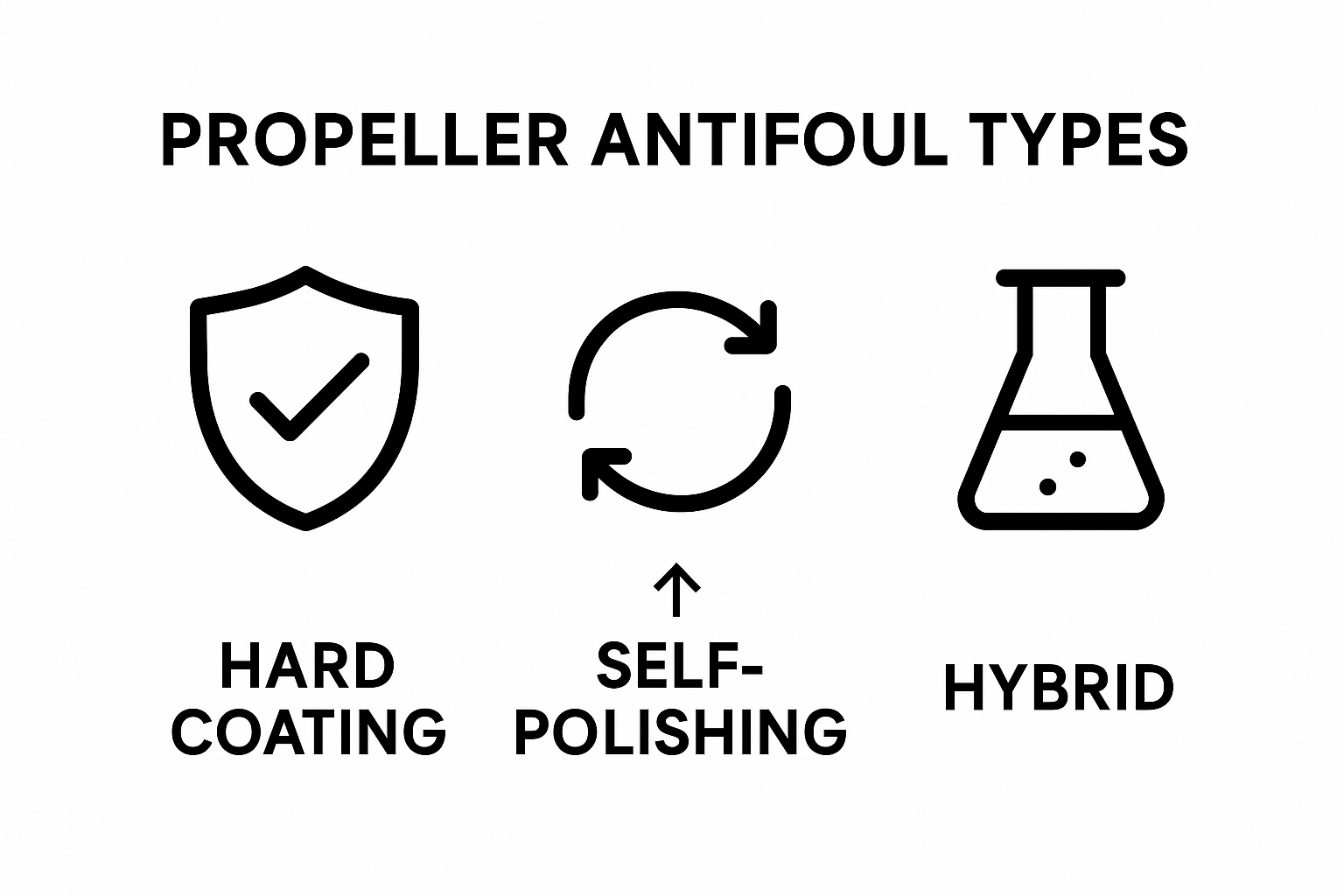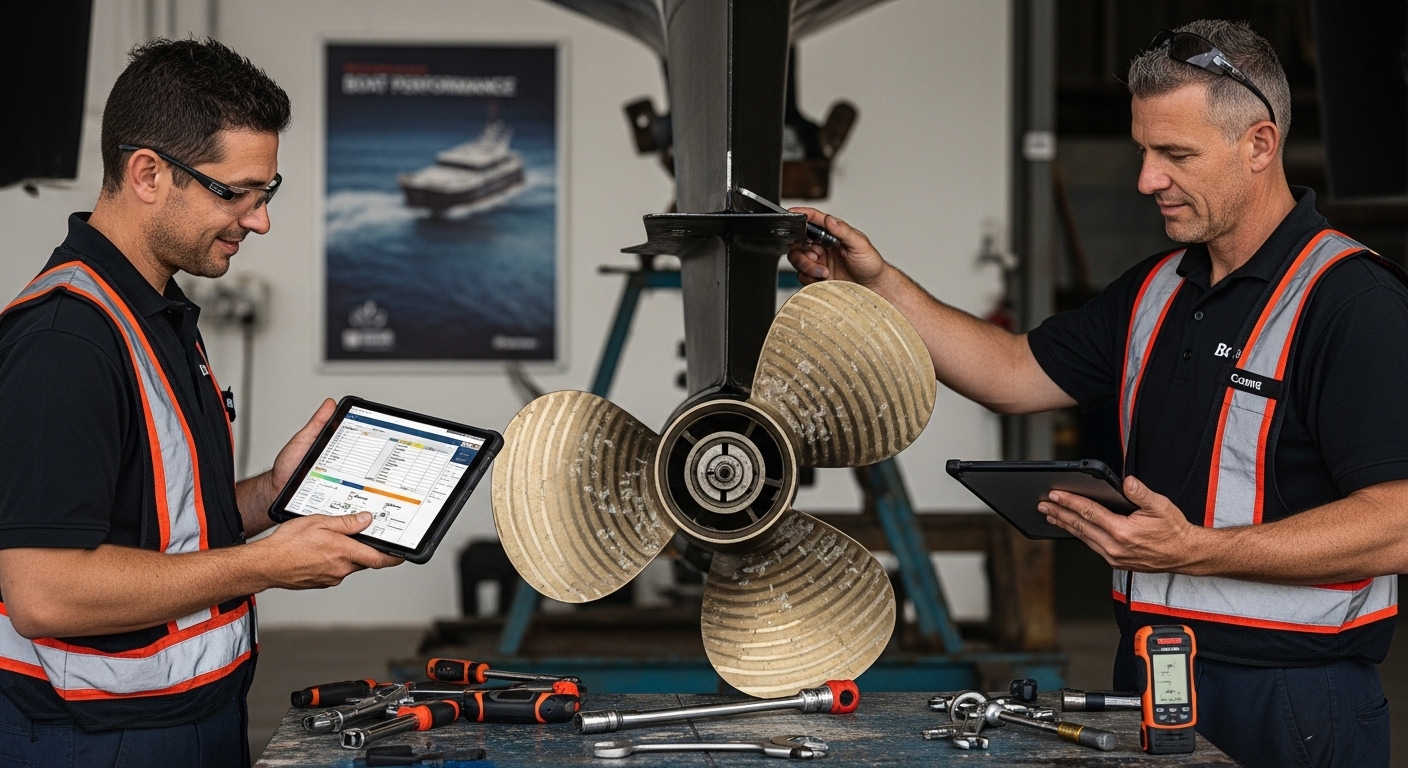Understanding the Role of Propeller Antifoul for Boat Owners
- andy80165
- Sep 25
- 7 min read

Boat upkeep is not just about keeping things shiny. Propeller fouling can quietly turn a smooth ride into a fuel-guzzling headache. But few owners realize that marine growth on untreated propellers can spike fuel consumption by up to 40 percent. Most people focus on hull maintenance, yet the real savings start at the spin—where specialized propeller antifoul coatings do more than just fight barnacles. They can transform your engine’s lifespan and your entire maintenance routine.
Table of Contents
Quick Summary
What is Propeller Antifoul and Its Purpose?
Propeller antifoul represents a specialized marine protective coating designed to prevent marine organism growth on boat propellers. Unlike traditional hull antifouling treatments, propeller-specific solutions target the unique challenges presented by this critical boat component. Understanding marine protection techniques requires recognizing how these coatings combat biological adhesion and performance degradation.
The Science Behind Propeller Fouling
Marine organisms like barnacles, algae, and microscopic organisms naturally seek surfaces to attach and grow. When these organisms accumulate on propellers, they create significant operational challenges. The rough surfaces generated by biological growth increase hydrodynamic drag, reducing vessel efficiency and potentially causing:
Increased fuel consumption
Reduced vessel speed
Higher mechanical stress on engine components
Potential long term propeller damage
Performance and Protection Mechanisms
Propeller antifoul works through advanced chemical formulations that create an inhospitable environment for marine organism attachment. These specialized coatings contain biocidal compounds that prevent biological growth while maintaining a smooth surface. The protective layer typically includes:
Copper-based compounds
Specialized polymers
Biologically active ingredients that discourage organism settlement
By applying these targeted treatments, boat owners can significantly extend propeller performance and reduce maintenance costs. Learn more about comprehensive antifoul solutions that protect your marine investments and ensure optimal vessel efficiency.
Why Propeller Antifoul Matters for Boat Performance
Boat performance hinges critically on the condition of its propeller, making propeller antifoul an essential maintenance strategy. Research from the Australian Department of Agriculture indicates that marine biofouling can significantly compromise vessel efficiency and operational capabilities.
Performance Impact of Untreated Propellers
Untreated propellers become breeding grounds for marine organisms, creating substantial performance challenges. As biological growth accumulates, boat owners experience progressive performance degradation. The microscopic and macroscopic marine life attachments generate uneven surface textures that dramatically increase hydrodynamic resistance. This biological buildup translates directly into measurable performance losses, including:
Decreased vessel speed capabilities
Increased fuel consumption rates
Reduced overall propulsion efficiency
Enhanced mechanical strain on engine components
Economic and Operational Consequences
Propeller fouling represents more than a mere aesthetic concern. The economic implications are substantial, with marine growth potentially increasing fuel consumption by up to 40%. Professional boat operators recognize that consistent propeller maintenance through specialized antifoul treatments provides substantial long term savings. Explore comprehensive antifoul renewal strategies to protect your marine investment and optimize vessel performance.
The strategic application of propeller antifoul goes beyond simple maintenance. It represents a proactive approach to preserving vessel integrity, ensuring consistent performance, and mitigating potential mechanical complications arising from unchecked marine biological growth.
How Propeller Antifoul Works to Prevent Fouling
Propeller antifoul operates through sophisticated chemical and physical mechanisms designed to create an environment hostile to marine organism settlement. Research from the Australian Department of Agriculture highlights the critical importance of understanding these protective strategies.
Chemical Barrier Mechanisms
The core functionality of propeller antifoul relies on specialized chemical formulations that actively discourage marine organism attachment. These advanced coatings contain biocidal compounds specifically engineered to prevent biological colonization. The protective layer typically incorporates multiple defensive strategies:
Copper and zinc-based biocidal ingredients
Polymeric compounds that create smooth, non-adhesive surfaces
Chemically reactive substances that interfere with organism settlement
Surface Interaction and Biological Resistance
Propeller antifoul works by disrupting the natural attachment processes of marine organisms. The coating creates a microscopic surface environment that makes it challenging for barnacles, algae, and other marine life to establish a permanent foothold. Key interaction principles include:
Reducing surface energy to minimize organism adhesion
Generating molecular-level repulsion mechanisms
Creating textural complexity that prevents stable attachment
Learn more about advanced antifoul options that can provide comprehensive protection for your marine vessel. The sophisticated science behind these treatments represents a critical advancement in marine maintenance technology, offering boat owners an effective solution to combat the persistent challenge of marine biological growth.
Key Concepts Behind Different Types of Propeller Antifoul
Propeller antifoul technologies have evolved significantly, offering boat owners a range of sophisticated solutions for marine growth prevention. Research from the Australian Department of Agriculture underscores the importance of understanding these diverse protective strategies.
Biocidal Coating Classifications
Modern propeller antifoul technologies can be broadly categorized based on their chemical composition and protective mechanisms. These classifications represent advanced marine engineering approaches designed to address specific environmental and performance challenges

:
Hard antifoul coatings with permanent biocidal properties
Self-polishing copolymer systems that gradually release protective compounds
Hybrid coatings combining multiple protective technologies
Performance and Environmental Considerations
The selection of propeller antifoul depends on multiple critical factors beyond simple marine organism prevention. Boat owners must consider complex interactions between coating performance, vessel type, and environmental conditions. Key evaluation parameters include:
Water temperature and salinity
Typical vessel operating speeds
Frequency of vessel usage
Specific marine ecosystem characteristics
Explore antifoul compatibility considerations to ensure optimal protection for your specific marine environment. The strategic selection of propeller antifoul represents a sophisticated balance between technological innovation, environmental responsibility, and practical marine maintenance requirements.
To help readers distinguish between the major types of propeller antifoul coatings described in this article, the table below compares their core characteristics and protective mechanisms.
Real-World Impact of Propeller Antifoul on Maintenance
Propeller antifoul represents more than a theoretical protective measure. Research from the Australian Department of Agriculture demonstrates its critical role in practical marine maintenance strategies.
Economic and Performance Implications
Untreated propellers experience substantial performance degradation that translates directly into measurable economic consequences. Marine growth accumulation creates significant operational challenges for boat owners, resulting in tangible financial impacts:
Increased fuel consumption by up to 40%
Reduced vessel speed and operational efficiency
Higher mechanical stress on propulsion systems
Accelerated component wear and potential premature replacement
Maintenance Frequency and Cost Considerations
The strategic application of propeller antifoul fundamentally transforms maintenance protocols. Professional boat operators recognize that proactive protective treatments substantially reduce long term maintenance expenses. Critical maintenance considerations include:
Reduced frequency of comprehensive propeller cleaning
Minimized risk of extensive marine growth damage
Extended operational lifespan of marine propulsion components
Simplified routine maintenance procedures
Learn more about effective antifoul removal techniques to optimize your vessel’s performance and maintenance strategy. The real-world impact of propeller antifoul extends far beyond simple marine organism prevention, representing a sophisticated approach to marine asset management and operational efficiency.
This table summarizes the key performance and maintenance differences between treated (antifouled) and untreated propellers as described throughout the article.

Protect Your Propeller and Performance with Proven Solutions
Have you noticed rising fuel costs or a drop in your boat’s speed? As explained in this article, marine biofouling can quickly turn small maintenance issues into costly repairs. Barnacles and algae on your propeller are not just cosmetic problems. These growths create more drag, wear down components, and force you to spend more on maintenance and fuel. Ignoring propeller antifoul could mean you are sacrificing both performance and savings.

Take back control and avoid unwanted surprises. Discover how our mobile marine services are dedicated to expert antifoul treatments, detailed cleaning, and custom fiberglass work. We use advanced techniques mentioned in the guide to keep your propeller clean and efficient. Protect your investment and feel the difference during your next trip. Act now and visit Lightning Boat Builders to request a tailored antifoul service, or explore more about our expert antifoul renewal strategies for lasting results. Don’t let your boat’s performance slip away—secure a smoother, faster, and safer ride today.
Frequently Asked Questions
What is propeller antifoul and why is it important?
Propeller antifoul is a specialized marine protective coating designed to prevent the growth of marine organisms on boat propellers. It is essential for maintaining propeller performance, reducing fuel consumption, and enhancing the overall efficiency of a vessel.
How does propeller antifoul work to prevent fouling?
Propeller antifoul works through advanced chemical formulations that create an inhospitable environment for marine organisms. These coatings contain biocidal compounds that discourage attachment and maintain a smooth surface on the propeller.
What are the performance impacts of untreated propellers?
Untreated propellers can become breeding grounds for marine organisms, leading to increased hydrodynamic drag, decreased vessel speed, up to 40% more fuel consumption, and elevated mechanical strain on engine components.
What factors should boat owners consider when choosing propeller antifoul?
Boat owners should consider the type of antifoul coating, the specific marine environment where the vessel operates, water temperature, salinity, vessel operating speeds, and the frequency of use to ensure optimal protection against biological fouling.
Recommended